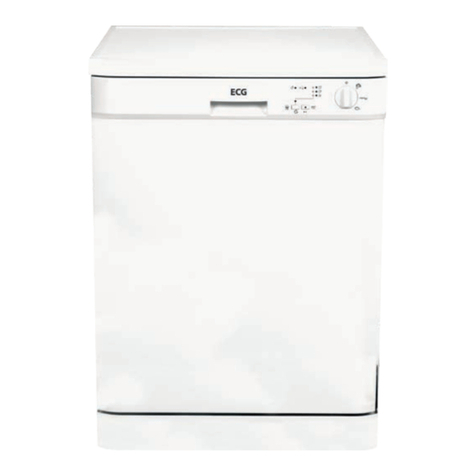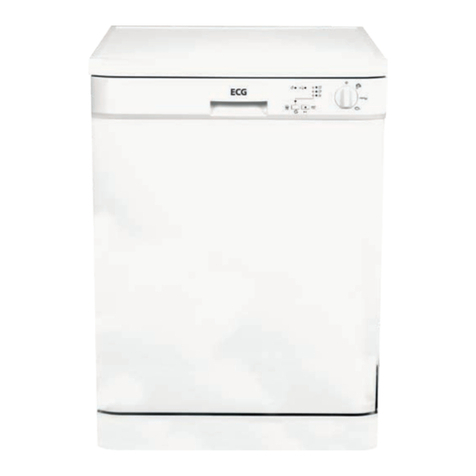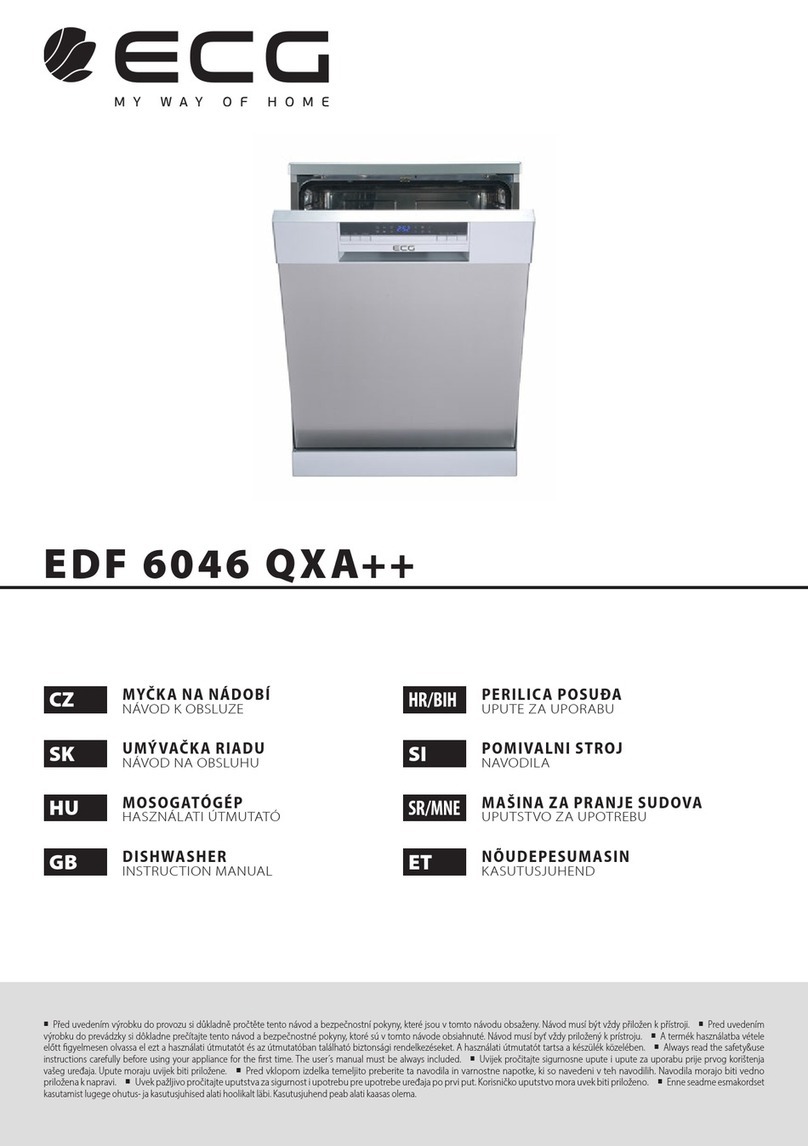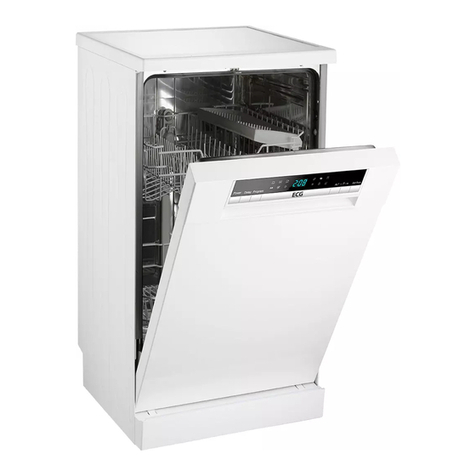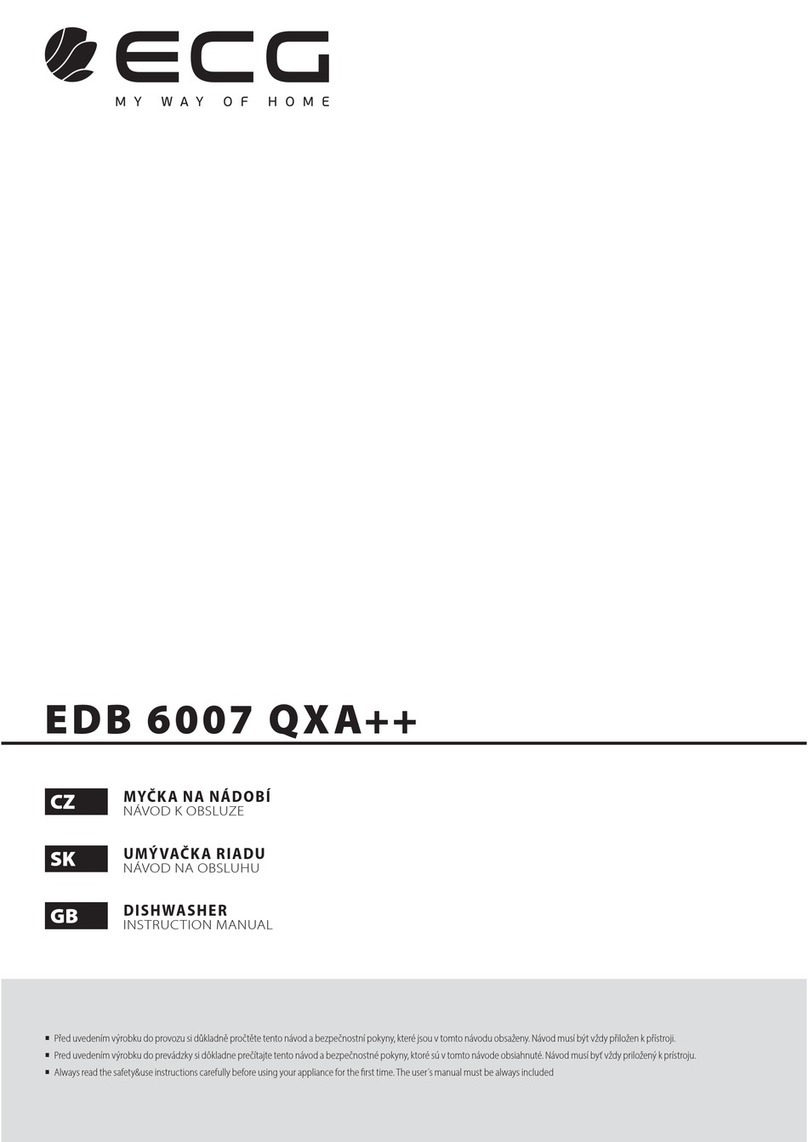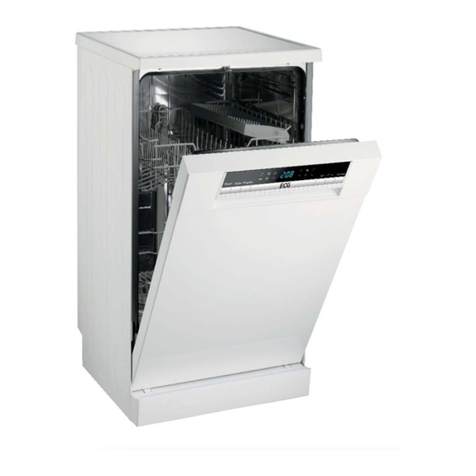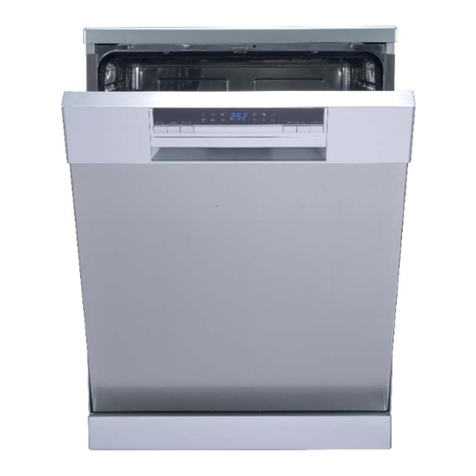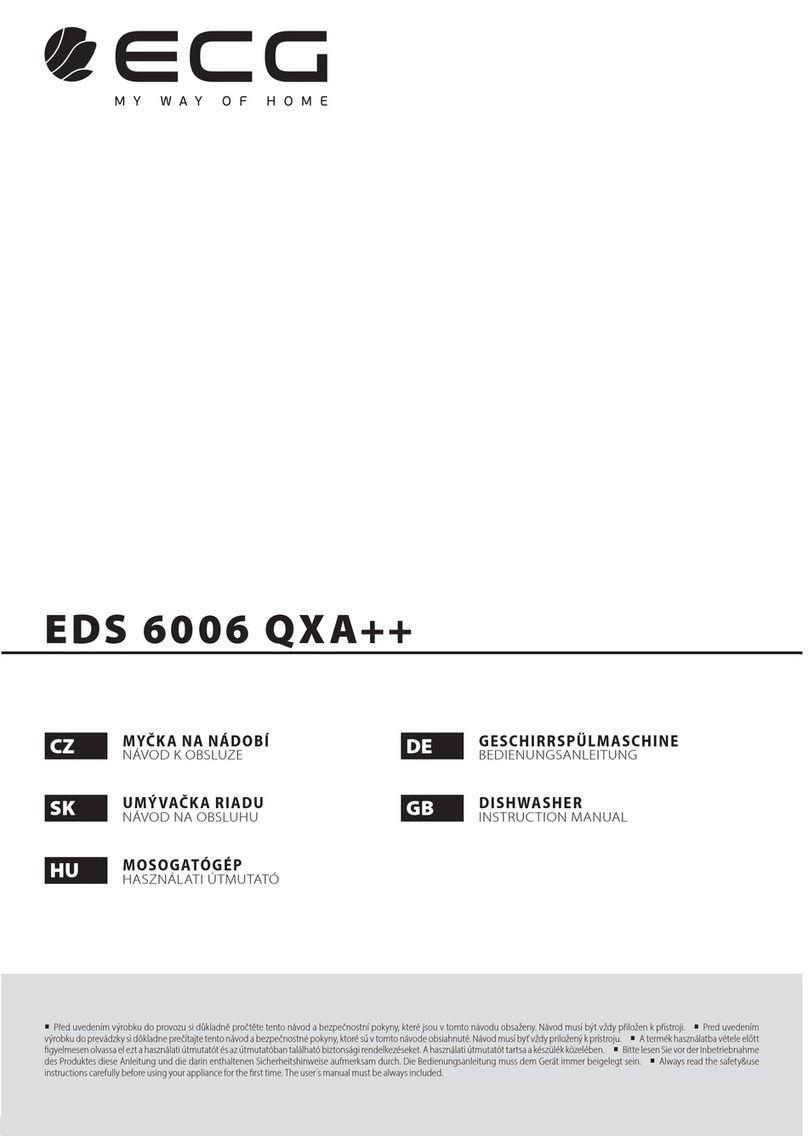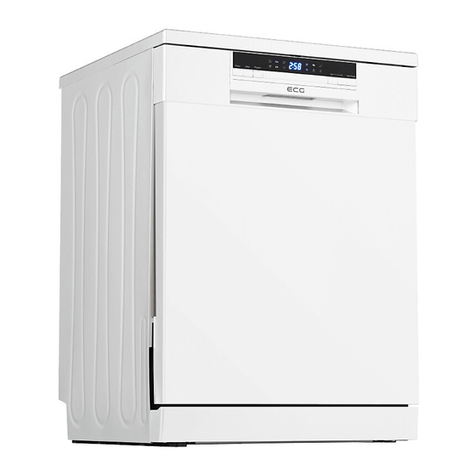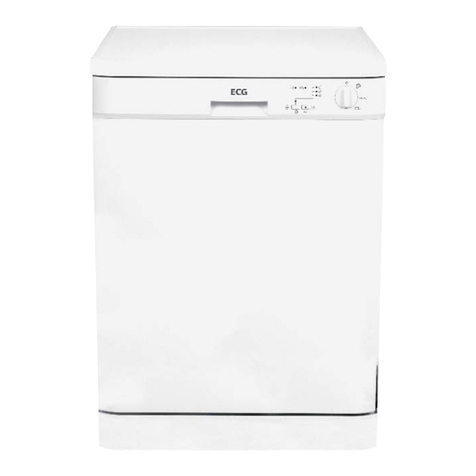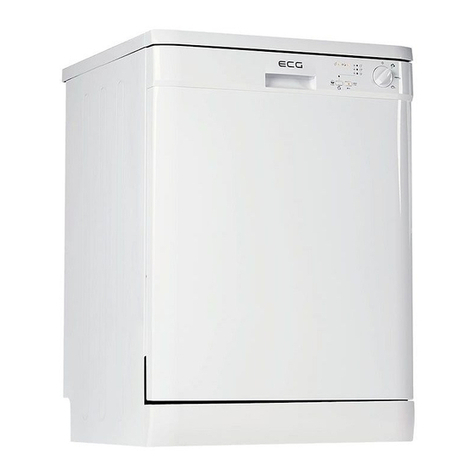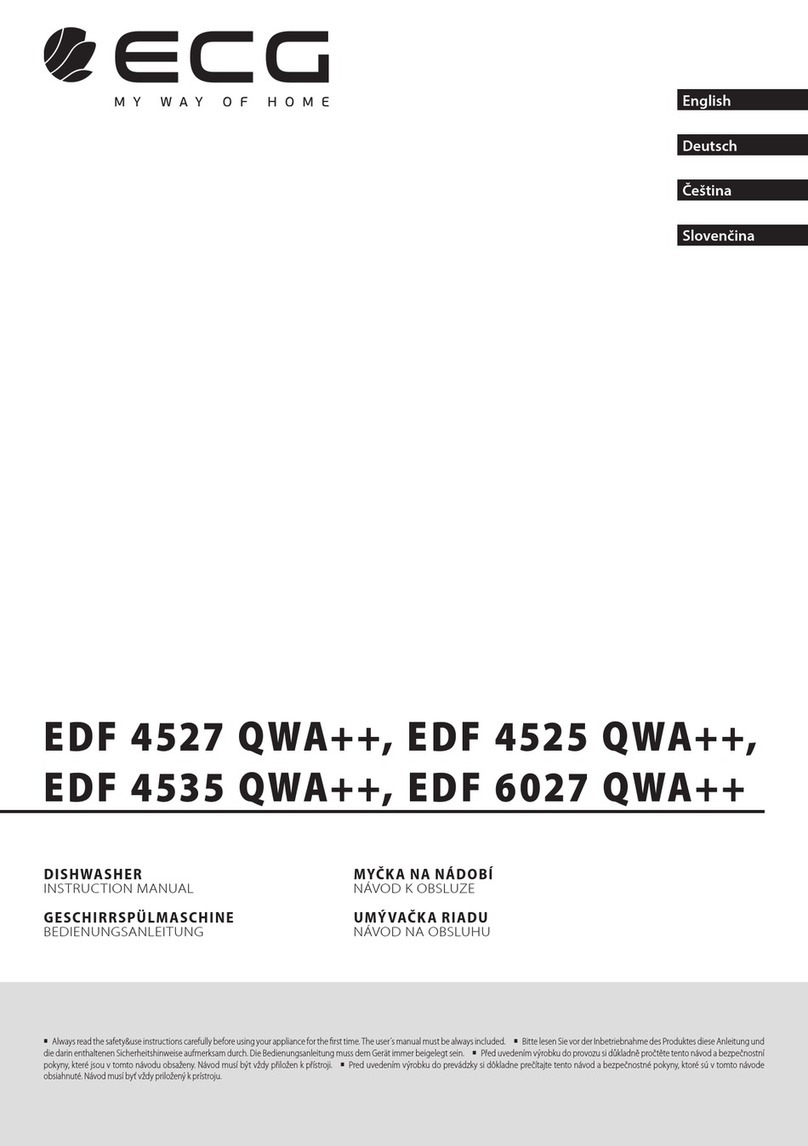
English
English
7
Connecting the water supply hose
1. The water pressure must be in range 0,04 up to 1,0, MPA. If the
water pressure is lower, contact a technician.
2. Make sure that the supply hose is not bent or twisted.
3. If the water pipes are new or have not been used for a long time,
have at rst ow out enough water until completely clean water
comes out.
4. Attach the hose to the water supply with 3/4 inch thread and
tighten ttings.
5. Check the tightness of the connection.
6. Open the water supply tap fully before using the dishwasher.
Connecting the drain hose
Connect the drain hose to the drain pipe and make sure that the
hose does not bend or twist. If the drain hose is too short, contact
an authorized service center to request a longer hose of the same
material. Keep in mind that the hose must not be even with an
extension longer than 4 meters. A longer drain hose would prevent
proper functioning of the dishwasher. Attach the hose rmly to
the drain pipe so that it will not loosen during the operation of the
dishwasher.
Connecting to the sink siphon
The waste connection must be placed at a height of between 50
cm (minimum) and 100 cm (maximum) above the bottom of the
dishwasher. The drain hose should be attached by a clamp. The free end of the hose must not be submerged
in water.
Power connection
Before connecting the plug of the power cord into an electrical outlet, check the following:
• The outlet is grounded and complies with current standards.
• The outlet is suitable for the maximum power of the appliance, which is indicated on the rating plate on
the inside of the door.
• The outlet voltage corresponds to the one on rating plate of the appliance.
• The type of outlet matches the type of plug of the power cord of the appliance. Otherwise, ask an
authorized technician to replace the improper outlet. Do not use extension cords or power strips to
connect the dishwasher.
Starting the dishwasher
Before starting the dishwasher, you need to check the following items.
1. The dishwasher stands straight and rm.
2. The intake valve is open.
3. Hose connections do not leak water.
4. The power cable is properly connected.
5. The outlet is powered.
6. The supply and drain hoses are not pinched or twisted.
7. All packaging and labels are removed from the dishwasher.
CAUTION
• After installation keep the instruction manual.
• The content of the manual provides important information for the user.
min500mm
min120mm
min 40mm
